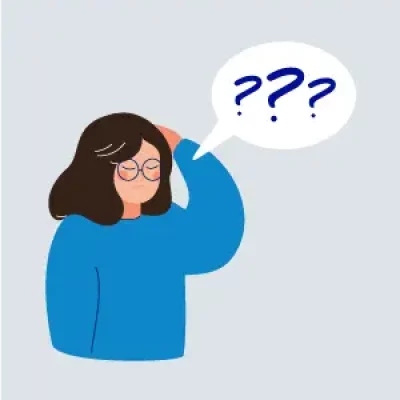Attention Deficit Hyperactivity Disorder (ADHD) is a neuro-developmental disorder that can significantly impact your personal, professional, and daily quality of life. This disorder is broken down into three main types: Hyperactive, Inattentive, and Impulsive, with a common occurrence to experience a combination of these types. When diagnosing and understanding ADHD, it is essential to understand there are significant differences between how men and women display symptoms.
According to research, boys are more likely to be diagnosed with ADHD than girls, with a ratio of 3:1. This has led to the misconception that this disorder is predominantly male-dominant. Women often present symptoms in different ways than men do, which leads to a lesser rate of diagnosis.
In this article, we will dive into the world of ADHD in women and explore how it looks different from ADHD in men. We will also discuss why women are often diagnosed later in life and provide some steps for managing ADHD symptoms.
ADHD in Women: Symptoms
Often, ADHD symptoms are classified by the type of ADHD you are experiencing. Whether you exhibit signs of impulsivity, hyperactivity, or inattentiveness, you tend to fall into one of those three categories from a general list of symptoms assumed to be experienced by anyone with an ADHD diagnosis.
The main difference between ADHD in women and men lies in the presentation of symptoms. While boys with ADHD tend to display more hyperactive and impulsive behaviors, girls may exhibit more internalizing behaviors, such as anxiety and depression.
Classic Female Symptoms of ADHD
-
- Difficulty with organization and time management
-
- Impulsiveness, not necessarily in an overtly physical way
-
- Trouble regulating emotions
-
- Heightened levels of anxiety and depression
-
- Internalizing symptoms rather than expressing them outwardly
-
- Increased likelihood of “daydreaming” instead of exhibiting hyperactive behavior
Also, girls and women with this disorder tend to have more difficulty with executive functioning skills, such as organization and time management. These, in combination with challenges with emotional regulation, lead to being perceived as disorganized, forgetful, and emotionally unstable.
Because all of these signs differ from the typical disorder profile, it could be why you have yet to receive a proper diagnosis, even through adulthood.
How Women Mask Symptoms
Women mask their symptoms better than men to appear more “normal.” Masking is a common coping mechanism to subdue symptoms around others or in public to lessen the impact of your struggles. You may work harder than others to maintain the same level of performance, thus masking your difficulties.
How women mask their ADHD symptoms:
-
- Overcompensating with perfectionism
-
- Avoiding tasks that highlight their weaknesses
-
- Using humor or talkativeness as a distraction
-
- Hyper-focusing on one job to the detriment of other tasks.
Because men mask less often, their diagnosis is much more straightforward. Women’s symptoms tend to be layered and not as apparent because you are working so hard not to show them.
ADHD in Childhood vs. Adulthood
Another factor that contributes to the differences in diagnosing ADHD in women is its presentation throughout different stages of life. In childhood, girls with ADHD may be more likely to display symptoms commonly associated with boys, such as hyperactivity and impulsivity. In adulthood, these symptoms may manifest differently for you.
For example, a hyperactive girl may turn into an overly talkative and fidgety woman. A child who constantly interrupts others may become a woman who struggles with self-control and impulsivity in social situations.
Understanding Differences
So why do men and women experience ADHD differently? The answer lies in the brain’s structure and function. Research has shown that the brains of men and women with ADHD operate differently, with women having more severe deficits in the areas responsible for executive functioning.
Additionally, societal expectations and gender norms may also play a role. Girls are often expected to be quiet, polite, and organized, making it harder to display the outward behaviors associated with ADHD. This can lead to feelings of shame and inadequacy, causing you to hide your symptoms or brush them off as something else entirely.
Coping with ADHD Symptoms
Despite the challenges that come with experiencing ADHD in your unique ways, there are ways to manage and cope with symptoms.
1. Understand Executive Function
You may have gone through life with a list of struggles, thinking if you tried harder, you would feel relief. Understanding the eight executive functioning skills and what difficulties you experience with them due to your undiagnosed ADHD can help validate your experiences.
List common difficulties you have in daily activities, then read through the executive functioning skills. Compare the skills with your struggles to identify which you may have trouble with. You can also take our ADHD self-assessment test to find more insight into how ADHD affects you.
Sometimes, it is difficult to see signs or symptoms because you think what you are experiencing is just everyday life. A mental health counselor can help identify behaviors, coping mechanisms and masking techniques you may not know you are exhibiting that could be attributed to your undiagnosed ADHD.
By better understanding your symptoms and potentially underdeveloped executive functions, you will have a better baseline for how to help cope and improve your symptoms.
2. Professional Diagnosis
Making significant progress in unmasking and easing your symptoms is highly dependent on an official diagnosis. A professional diagnosis takes you through industry-standard testing to identify your symptoms on a clinical level, which assesses the presence of your symptoms, their severity, and how they affect your daily life.
After a professional diagnosis, your counselor will create a plan for diving deeper into how you experience ADHD and how to gain the skills necessary to alleviate the severity of your symptoms. A diagnosis also opens the door for available accommodations in various settings based on your symptoms.
If you are a student, contact the disabilities or accommodation department on campus that can give you more time for tests, a note-taker for class, or software to read text books out loud for you if you are unable to focus enough on your reading assignments.
Because ADHD is often accompanied by anxiety, there are federal laws that protect your right to reasonable accommodations at work if there are aspects of the job that increases the severity of your symptoms. Talk to your counselor for more information on options that are available for you.
3. Medication
Medication is often prescribed to help regulate attention and impulsivity. Depending on your diagnosis, medication can be a great option to help cope with your symptoms and get things done more consistently. Talk to your counselor to see if this is a good option for you and your symptoms.
4. Reduce Stress
Because anxiety and depression often coexist with this disorder, reducing stress is pivotal to managing symptoms. This could include creating a self-care routine, eliminating unnecessary stressors, learning to delegate responsibilities so that you aren’t carrying too much on your shoulders, and prioritizing sleep hygiene to make sure you have the best chance to rest well each night.
No matter how you reduce your stress load, it will undoubtedly be beneficial in easing the severity of your symptoms now and in the future.
5. Self-Compassion
Remember that experiencing ADHD does not define you as a person. With proper support and management strategies, you and other women with ADHD can lead successful and fulfilling lives. Show yourself gratitude for working so hard to get this far when you have been carrying this invisible struggle.
Progress in easing your symptoms can take some time. Even small steps of progress in how this disorder affects you can result in significant improvements in your quality of life over time.
Conclusion
ADHD in women is a unique and often misunderstood experience because diagnosis is based on traditional symptoms often exhibited by boys or men. The rate at which women are being diagnosed is rising. It is still 3x less than the diagnosis of men. Much is still to be learned about women’s struggles with ADHD so that symptom management options are explored based on the specific needs and struggles that girls and women face.
It’s essential to educate yourself on how you struggle with this disorder and seek appropriate support to help you cope with and improve your symptoms effectively. Scheduling an appointment with a counselor who can help you identify your symptoms and struggles and provide a diagnosis is crucial to learning to cope and improve your quality of life.
Stepping outside of your comfort zone can feel overwhelming. It may feel easier to suffer in silence instead of being vulnerable and talking about your struggles. Take the first step and speak to a counselor today to start the path toward managing your ADHD symptoms.
If you are ready to start the diagnosis process and take steps to ease your symptoms, call us at (833)-274-heal or schedule an appointment to speak to a counselor who specializes in ADHD therapy.
Take Our 8-Question ADHD Test For Adults: The First Step Toward Diagnosis And Relief
Why ADHD Paralysis Makes Life Painfully Difficult & How To Overcome It
Is ADHD A Disability? What You Need To Know Before You Apply For Benefits








